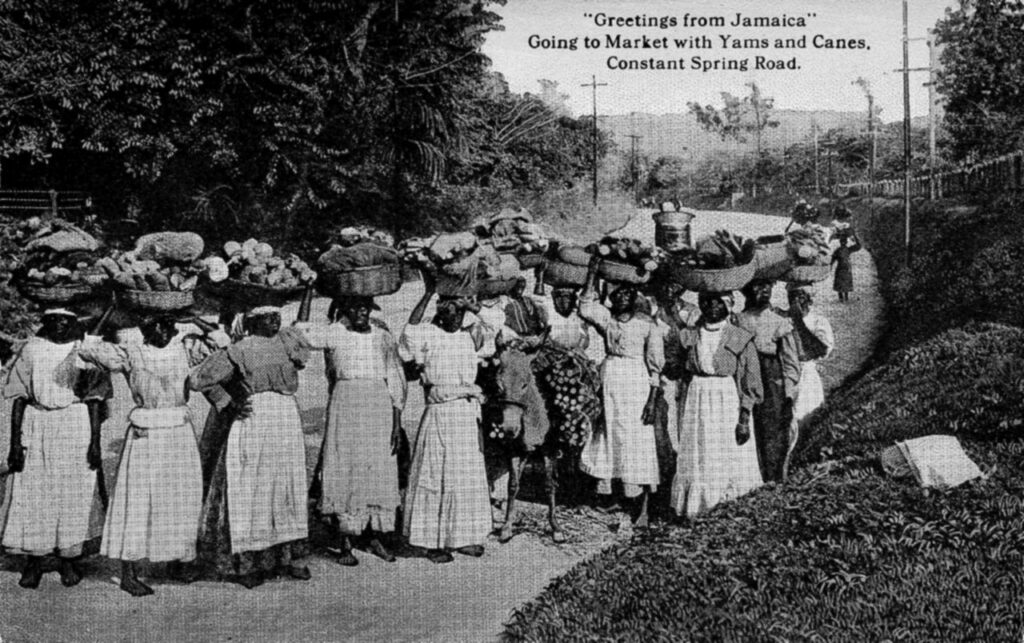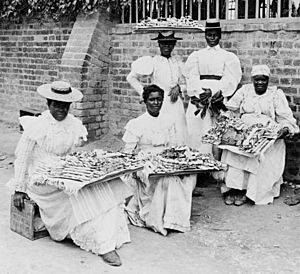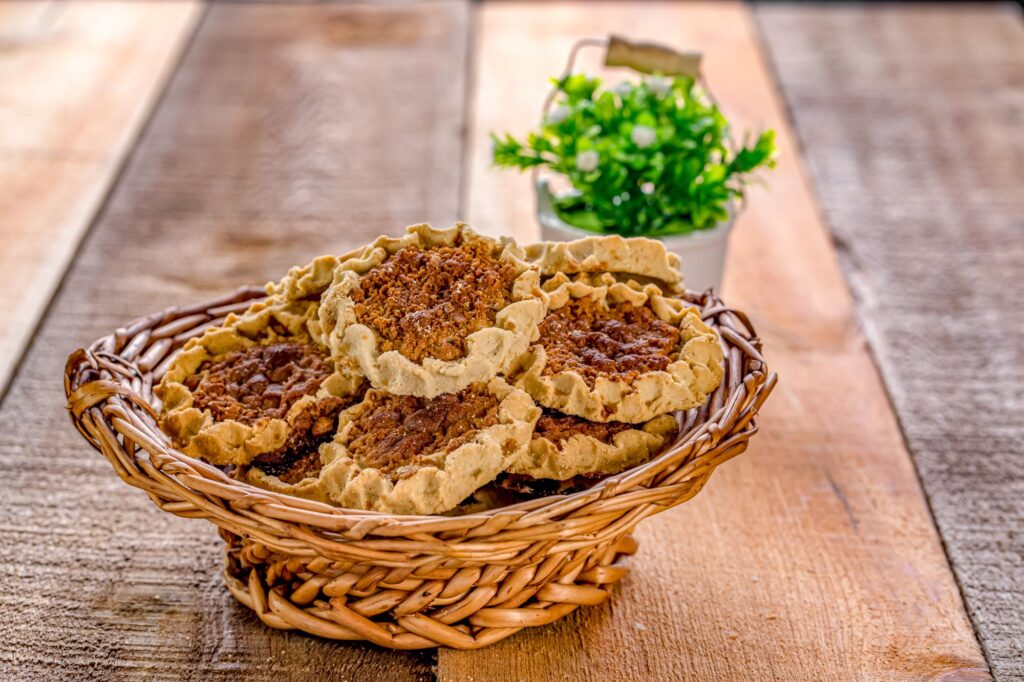Jamaican cuisine, a vibrant fusion of flavors and traditions, offers a delectable journey through the island’s rich history and cultural diversity. Get ready to learn about the origins of Jamaican food, its evolution over the centuries, and what makes it uniquely tantalizing in today’s culinary landscape.
The Early Influences: A Melting Pot of Flavors
The story of Jamaican cuisine, like the island itself, is one of layers and intermingling cultures. It begins long before any European ships arrived, with the island’s original inhabitants, the Taíno (often referred to historically as Arawaks). Their diet was ingeniously adapted to the island’s bounty, primarily consisting of cassava, corn, sweet potatoes, fish, and tropical fruits like guava and pineapple. They were masters of “barbacoa,” a method of slow-cooking meat over a pimento wood fire – a technique that would later become foundational to the world-famous jerk cooking. This indigenous culinary base laid the groundwork for a cuisine that would evolve dramatically with each wave of newcomers.



Spanish Arrival
In 1494, Christopher Columbus landed on Jamaica, and with Spanish colonization came the introduction of new animals, plants, and culinary methods. Spanish dishes, particularly those with a heavy emphasis on meats and stews, began to influence the local diet.

African Impact
The most significant transformation in Jamaican cuisine came with the arrival of Africans during the slave trade era. Enslaved Africans brought with them okra, callaloo, and various cooking techniques, which became integral to Jamaican food culture. They were adept at making hearty meals from limited ingredients, a skill that profoundly influenced the island’s culinary practices.

The British Influence and Beyond
With the British colonization in 1655, new food items such as salted cod (which would later become the main ingredient in Jamaica’s national dish, Ackee and Saltfish), and livestock were introduced. The British also brought indentured laborers from India and China, adding curry and chow mein to the mix of flavors.

The Birth of Jerk Cooking
Jerk cooking, perhaps Jamaica’s most famous culinary export, has roots in both African and indigenous Taíno traditions. The Taíno’s method of slow-cooking meat over a fire pit evolved, as Africans added their own spices, creating the unique flavor profile that jerk seasoning is known for today.

Rastafarian Influence: The Rise of Ital Cooking
The Rastafarian movement, which began in the 1930s, introduced Ital cooking – a natural, vegetarian style of cooking that abstains from salt and preservatives. Ital cooking emphasizes fresh vegetables, fruits, and legumes, reflecting the Rastafarian ethos of living in harmony with nature.



Jamaican Food Today: A Blend of Old and New
Modern Jamaican cuisine is a beautiful tapestry woven from its history. Street food like jerk chicken and patties remain popular, while chefs are innovating and introducing contemporary techniques to traditional dishes.



💡 Experiencing Jamaican Food:
- On the Island: The best way, of course! Visit local cookshops, jerk centers, and street vendors. My trip to Jamaica was a delicious reminder of this.
- At Home: Try your hand at making Jamaican dishes! There are many fantastic recipes online. For authentic ingredients, you might look for Walkerswood Jamaican Jerk Seasoning Mixed Pack or Grace Yellow Scotch Bonnet Hot Pepper Sauce. A good cookbook like “Original Flava: Caribbean Recipes from Home” can be a great start. For a taste variety, try the Tropi Delight Jamaican Variety Snack Box.
- Restaurants: Seek out Jamaican restaurants in your area for an authentic taste.
Signature Dishes
- Ackee and Saltfish: Ackee, brought from West Africa, cooked with salted cod, onions, and spices.
- Jerk Chicken or Pork: Meat marinated in a blend of allspice, scotch bonnet peppers, and other spices, then slow-cooked over a fire.
- Curry Goat: A testament to the Indian influence, featuring tender goat meat in a spicy curry sauce.
Unique Ingredients: The Flavor Foundation
The distinctive taste of Jamaican food comes from a unique blend of fresh, local ingredients and powerful spices:
- Allspice (Pimento): Native to Jamaica, pimento is a cornerstone of jerk seasoning, providing warm, peppery, and slightly sweet notes reminiscent of cinnamon, nutmeg, and cloves combined.
- Scotch Bonnet Peppers: These small, fiery peppers are prized for their intense heat and fruity, aromatic flavor. They are essential to jerk and many other spicy Jamaican dishes.
- Breadfruit, Plantains, and Yams: These starchy staples are incredibly versatile, served fried, boiled, roasted, or mashed, accompanying many meals and providing essential carbohydrates.
- Thyme, Scallion (Green Onion), Garlic, and Ginger: These aromatics form the flavor base for countless Jamaican dishes, from stews and curries to marinades.
- Coconut Milk: Adds richness and a subtle sweetness to dishes like rice and peas, stews, and desserts.
Contemporary Twists
Today’s Jamaican chefs are blending traditional flavors with global culinary trends, introducing vegan options, and experimenting with fusion dishes that reflect the island’s multicultural heritage.

Conclusion
Jamaican cuisine is a dynamic and ever-evolving art form, deeply rooted in the island’s history and cultural exchanges. From the smoky, spicy flavors of jerk cooking to the hearty, comforting stews and curries, Jamaican food offers a unique and delicious window into the island’s soul. Whether you’re a seasoned foodie or a curious newcomer, the flavors of Jamaica are sure to captivate and delight your palate.
My Favorite Services & Deals For You
I genuinely use and love these services. If you sign up with my link, we often both get a bonus—a true win-win!
Lifestyle & Ridesharing
ClassPass
Get a free trial with 20 bonus credits to explore thousands of fitness classes and wellness experiences.
Claim Free TrialFinance & Investing
M1 Finance
Get $75 when you sign up and fund a new investment account with $100 or more.
Get $75 BonusChase Sapphire Reserve® & Preferred®
Earn 125,000 points with Sapphire Reserve® or 75,000 bonus points with Sapphire Preferred®.
Explore Sapphire CardsChase Business Cards
Earn 200,000 bonus points with Sapphire Reserve for Business℠ or up to $1,000 cash back.
Explore Business CardsVenmo
Both you and your friend earn $5 when they make a qualifying payment of at least $5.
Join VenmoCoinbase & Coinbase One
Join Coinbase. Coinbase One members get $10 off next month per referral.
Join CoinbaseMonarch Money
My favorite tool for tracking all my finances in one place. Try it free for 30 days.
Try for FreeShopping & E-commerce
Shop My Amazon Store
Browse curated recommendations and products I personally use and recommend.
Shop on Amazon